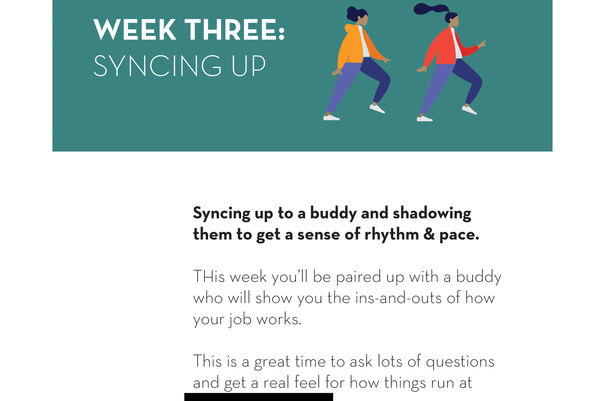Feature Project #1: Enhancing New Hire Induction Experience
In May of 2025, I reimagined an induction programme to reduce cognitive overload and improve staff retention at a residential aged care facility. I used the A.D.D.I.E. model to guide each stage of development: Analysis, Design, Development, Implementation, and Evaluation.
A learner needs analysis linked high staff turnover to dense, 37-hour e-learning induction modules, suggesting cognitive overload. I responded with a hybrid approach built on three strands:
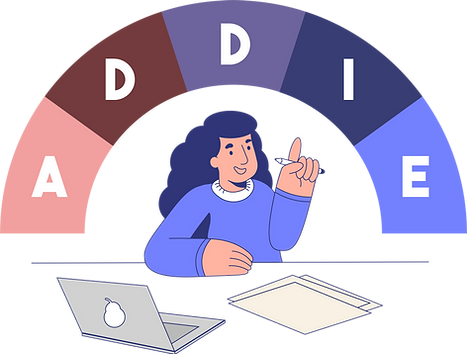
-
Scenario-based learning for developing soft skills through realistic decision-making.
-
Gamified and simulation-based eLearning for engaging, hands-on technical skill development.
-
Group-based face-to-face sessions to unpack complex social and cultural dynamics through discussion and collaboration.
I used the Kirkpatrick model to evaluate the induction program’s effectiveness across reaction, learning, behaviour, and results, enabling ongoing improvements.
This approach reduced reliance on passive, information-heavy modules by introducing active, learner-centred experiences. My role as a learning designer, grounded in Adult Learning Principles as outlined by Malcolm Knowles, as well as Self-Determination Theory, Cognitive Load Theory, and Universal Design for Learning, is to curate modalities that meet learners where they’re at and maximise engagement and impact.
Selected portfolio pieces are shown below.

ANALYSIS 1A: Create Learner Personas
for staff at Residential Aged Care Facility


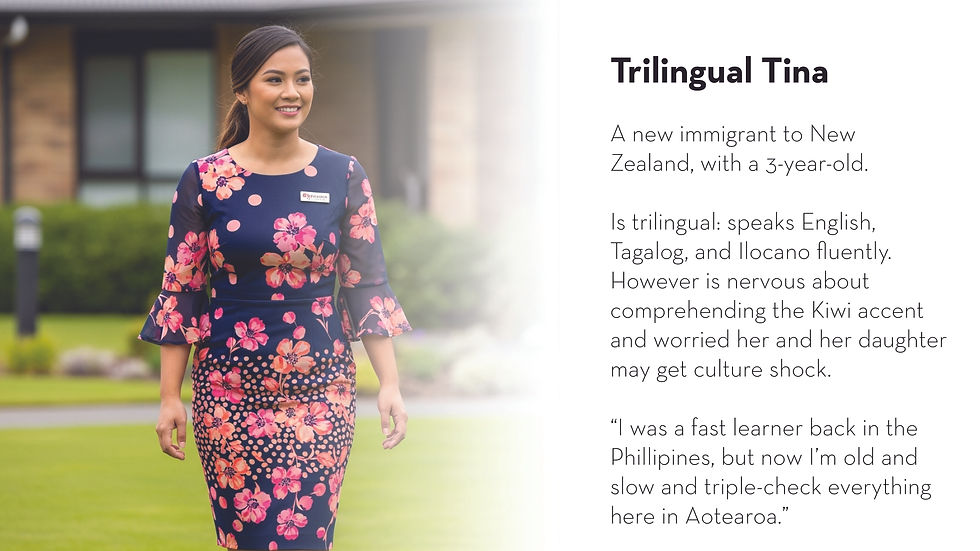


ANALYSIS 1B: Needs Assessment
Identify performance gaps or problems the training should solve (e.g., compliance issues, skill shortages, high turnover).
 |  |  | 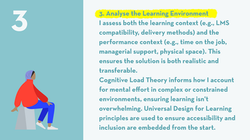 |
|---|---|---|---|
 |  |  |  |
 |

DEVELOPMENT: Building Digital and Print Training Materials Using Adobe Creative Suite

EVALUATION: Measure the Effectiveness of Hybrid Induction and Role-Specific Training with Google Forms Surveys and the Kirkpatrick Evaluation Model


Feature Project #2: Online Music Theory Course
During the summer of 2025, I designed an online music theory course tailored for neurodivergent learners, using the A.D.D.I.E. model.
Below, you’ll find selected portfolio pieces that illustrate each phase of this process.


ANALYSIS: Create Learner Personas
for Online Music Course
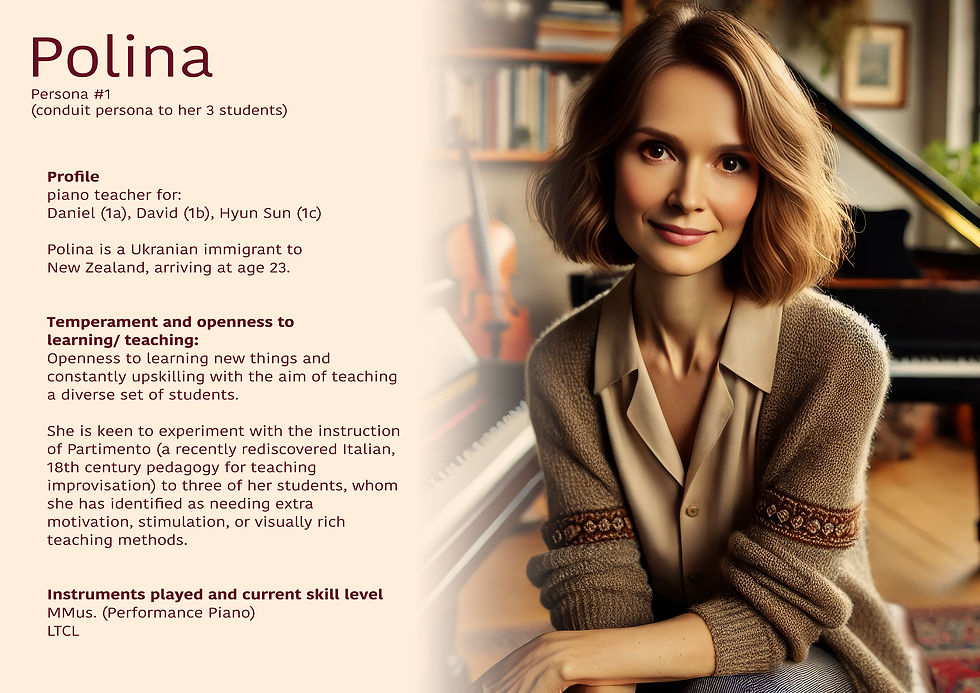


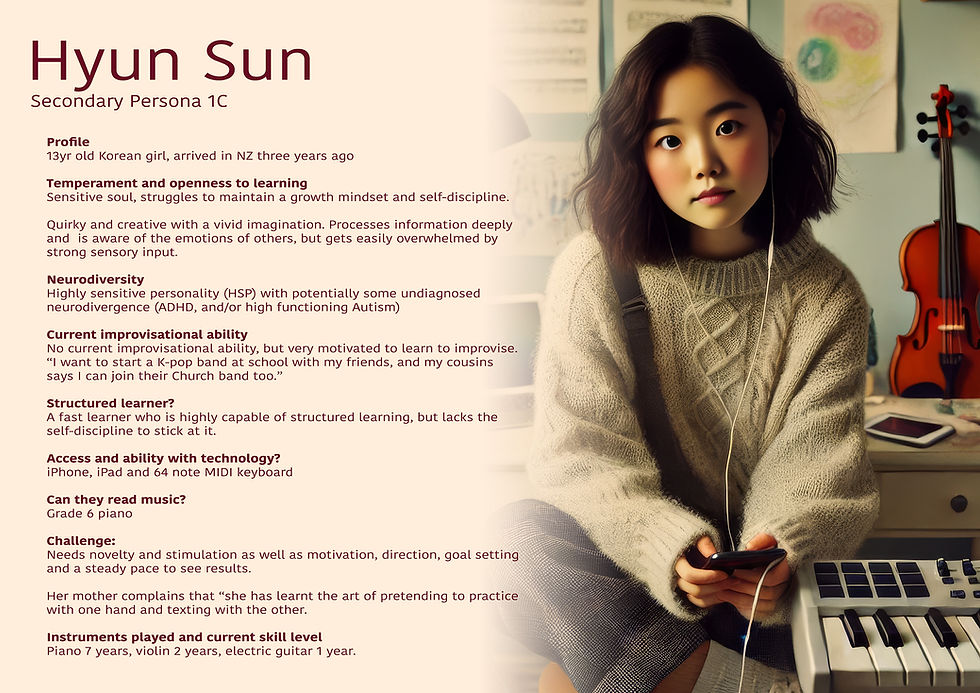

DESIGN: Outline learning objectives, strategies, and assessment methods
Below are screenshots from the course, highlighting clear objectives, inclusive instruction designed for neurodivergent learners, interactive drag-and-drop quizzes, and both formative and summative assessment strategies.


DEVELOPMENT: Build scenario-based learning modules, gamified activities, quizzes, and interactive animations using Articulate (Rise & Storyline), Adobe Suite and Final Cut Pro for video editing

IMPLEMENTATION: Video walk-through of online music course (hosted on Moodle LMS)

EVALUATION: Assess effectiveness of online course using TELAS model
 |  |  |
|---|---|---|
 |  |  |
 |  |
Feature Project #3: NZ Music Commission Grant (2022) - Research into Music Education

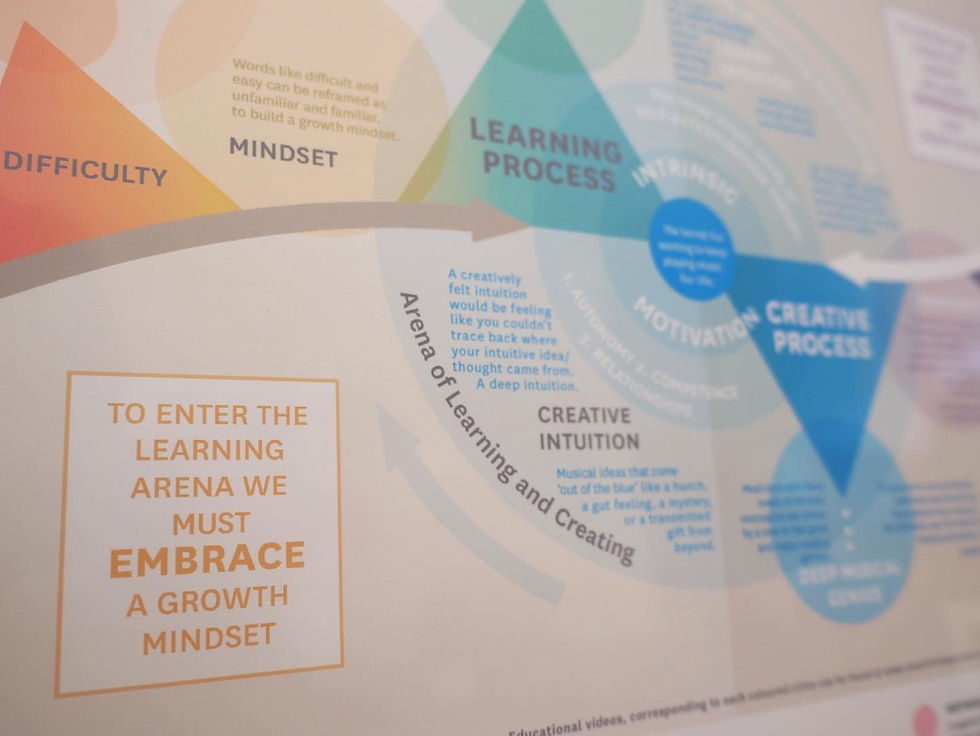






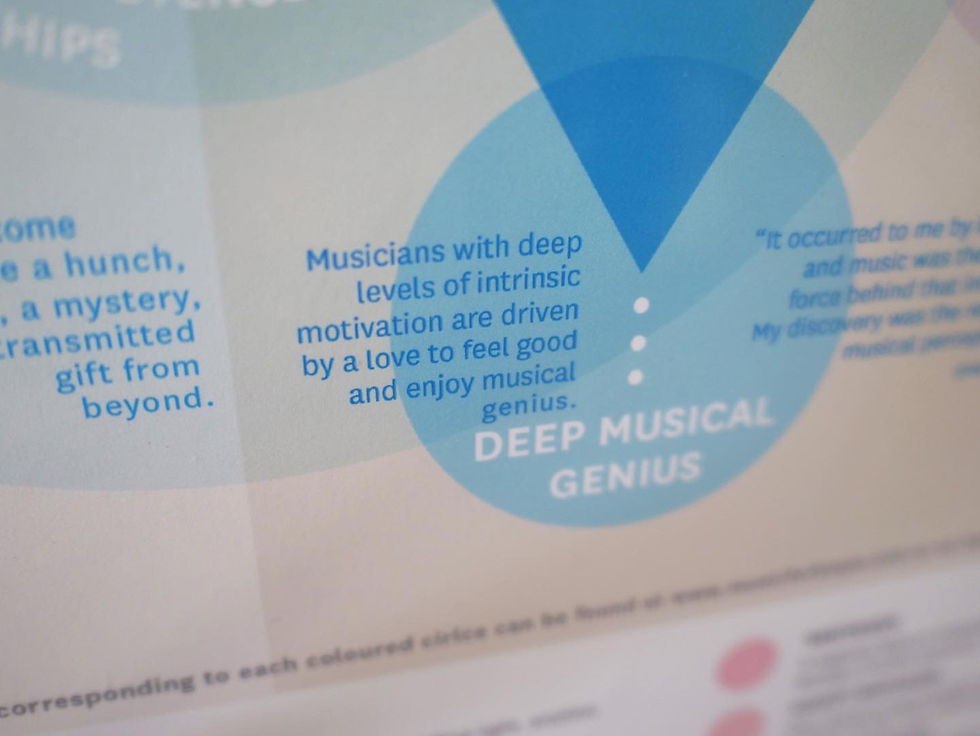
Feature Project #4: Babybelles - YouTube Channel, Instagram Account, Online Course (Teachable LMS Platform), & Web App















